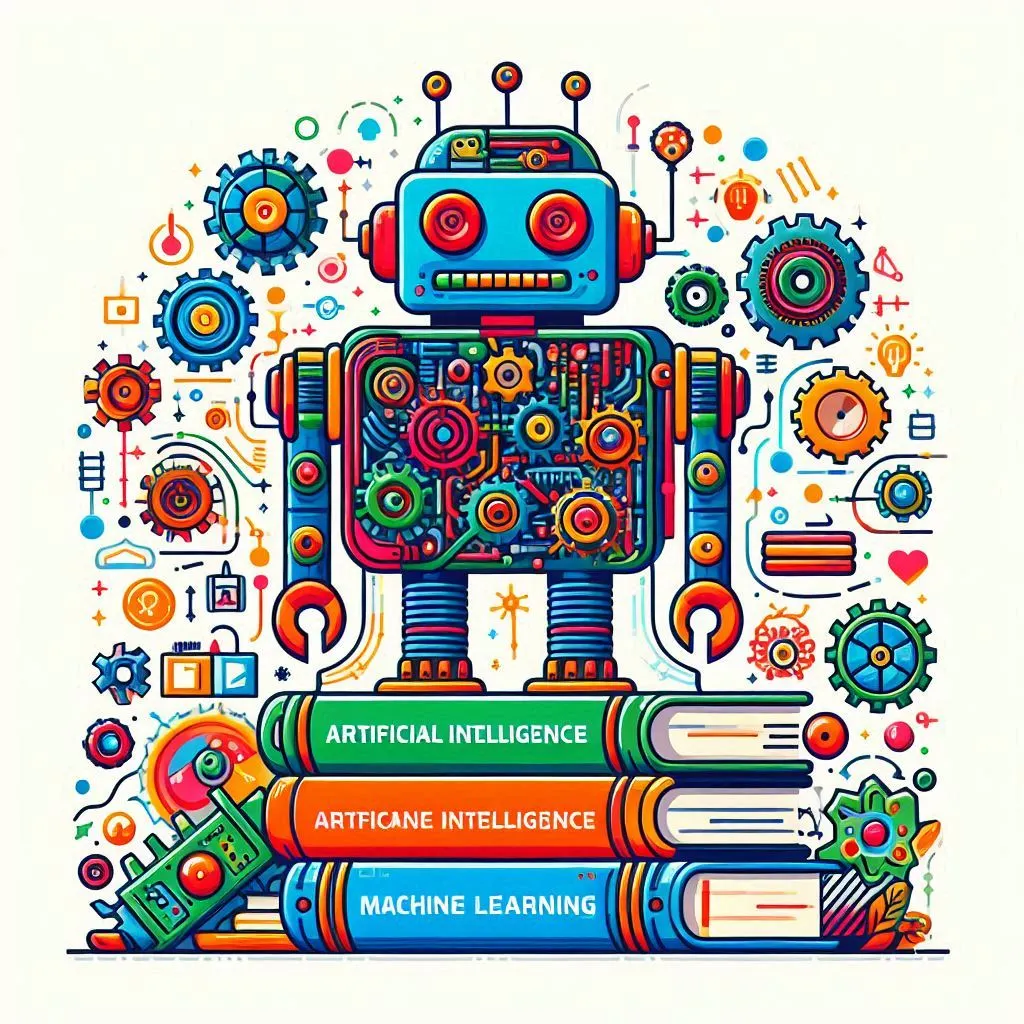Delving into Robotics Programming: Creating Robot Behavior Using Python

Programming robots to simulate behaviour in Python opens a gateway to the dynamic world of robotics and artificial intelligence (AI). In today's technological landscape, where autonomous systems are increasingly prevalent, understanding how to design and implement simulations is crucial for aspiring engineers and programmers. Python, with its versatility and rich ecosystem of libraries, provides an ideal platform for developing these simulations. Additionally, seeking assistance with Python homework can enhance your ability to tackle complex projects and deepen your understanding of this powerful programming language."
At its core, programming robots involves creating algorithms and models that mimic real-world behaviors. Whether it's navigating a physical space, performing tasks, or interacting with environments, these simulations serve as virtual laboratories where developers can test and refine their ideas. Python's simplicity and readability make it accessible for beginners while offering advanced capabilities for complex simulations. The language's extensive libraries, such as NumPy for numerical computations and Matplotlib for visualization, empower programmers to simulate intricate scenarios with ease.

One of the fundamental aspects of programming robots in Python is understanding the principles of object-oriented programming (OOP). By defining classes and objects, developers can model robots with attributes like position, direction, and task-specific behaviors. This structured approach not only facilitates code organization but also enhances reusability and scalability, essential for building large-scale simulations.
Moreover, Python's integration with AI and machine learning frameworks like TensorFlow and PyTorch further enriches robotic programming. These tools enable developers to imbue robots with learning capabilities, allowing them to adapt and improve their behaviors over time. Reinforcement learning algorithms, for instance, can be implemented to teach robots how to navigate and perform tasks autonomously based on feedback from their environment.
In educational settings, programming robots in Python serves as an invaluable tool for teaching STEM concepts. It engages students in hands-on learning experiences where they can apply theoretical knowledge to practical scenarios. From simulating basic movements to developing advanced strategies for problem-solving, students gain insights into the complexities of robotics while honing their programming skills.
Ultimately, mastering the art of programming robots in Python empowers individuals to innovate in fields ranging from industrial automation to space exploration. By embracing this discipline, programmers not only contribute to technological advancements but also shape the future of robotics, making it safer, more efficient, and increasingly integrated into everyday life
Introduction to Robotics: Exploring the Future of Autonomous Systems
Robotics stands at the forefront of modern technological advancement, encompassing the interdisciplinary fields of mechanical engineering, electrical engineering, computer science, and more. At its core, robotics involves the design, construction, operation, and use of robots to perform tasks autonomously or semi-autonomously. These tasks range from simple repetitive actions to complex operations in environments deemed hazardous or impractical for humans.
The field of robotics holds immense promise across various industries, from manufacturing and healthcare to space exploration and household applications. Robots are increasingly integrated into society, revolutionizing industries with their precision, efficiency, and ability to operate tirelessly under diverse conditions.
Fundamentally, a robot is a machine designed to execute tasks automatically, often controlled by computer programs or electronic circuits. This autonomy distinguishes robots from mere automated machines, allowing them to adapt and respond to changing circumstances in real-time. Central to their operation are sensors, actuators, and algorithms that enable perception, decision-making, and action.
Key components of robotics include kinematics, which studies the motion of robots and their limbs; dynamics, focusing on forces and torques that affect robot movement; and control theory, crucial for governing robot behavior and ensuring stability and performance. Advances in artificial intelligence (AI) and machine learning further enhance robot capabilities, enabling them to learn from experience and improve efficiency over time.
Robotic systems vary widely in complexity and functionality. They range from industrial arms performing precise manufacturing tasks to autonomous drones navigating complex environments. Collaborative robots (cobots) work alongside humans, enhancing productivity and safety in shared workspaces.
As robotics continues to evolve, ethical considerations surrounding their deployment and interaction with humans become increasingly important. Issues such as privacy, job displacement, and robot rights are actively debated, highlighting the need for thoughtful development and regulation of robotic technologies.
In conclusion, the study of robotics is not just about building machines; it is about exploring the frontiers of human-machine interaction and advancing our understanding of autonomy and intelligence. This introductory overview sets the stage for deeper exploration into the fascinating world of robotics, where innovation meets practical application to shape the future of technology and society.
Simulation Basics
In the realm of robotics, simulations serve as indispensable tools for testing and refining autonomous systems before real-world deployment. These simulations replicate the behavior of robots navigating through predefined environments, such as rooms, and performing specific tasks, like cleaning. By leveraging programming languages like Python and essential modules such as random, engineers can accurately model robot movements, decision-making processes, and interactions with their surroundings. Understanding these basics lays a solid foundation for developing sophisticated algorithms and strategies to optimize robot performance and efficiency in various practical scenarios.
Python Essentials for Implementation
Utilizing Python’s capabilities, particularly its random module, is crucial for creating dynamic simulations. The random module offers essential functions such as random.randint() and random.random(), which play pivotal roles in simulating various aspects of robot behavior. For instance, random.randint() facilitates generating random integers, enabling diverse scenarios in movement simulations. On the other hand, random.random() provides a uniform distribution of random floats between 0 and 1, which is indispensable for probabilistic decision-making processes within the simulated environment. These functions collectively empower programmers to model intricate behaviors and decision pathways for robots, thereby enhancing the realism and complexity of simulations. By harnessing Python's random module effectively, developers can replicate real-world uncertainties and variability, crucial for testing and optimizing robotic algorithms and strategies. This integration of Python's random capabilities ensures that simulations accurately reflect the unpredictable nature of real-world scenarios, enabling robust development and refinement of robotic systems
Components of the Simulation
The simulation consists of two fundamental components: firstly, the RectangularRoom class serves to delineate the spatial layout of the room and governs the cleaning procedures within it. Secondly, the Robot class takes charge of orchestrating the robots' navigation throughout the room and oversees their cleaning capabilities. Together, these classes synergize to simulate an environment where robots efficiently clean a designated space by following predefined algorithms and spatial constraints. The RectangularRoom class establishes the foundational framework, while the Robot class dynamically engages with the environment to optimize cleaning efficiency based on its programmed parameters and the room's dimensions.
Types of Robots
The simulation employs a variety of robot types, each designed with distinct characteristics that significantly impact cleaning efficacy. For instance, the StandardRobot operates efficiently under optimal conditions, adhering strictly to its programmed directives. In contrast, the FaultyRobot introduces variability, occasionally deviating from its intended path or exhibiting intermittent functionality, thereby posing challenges to cleaning tasks. These differences in behavior underscore the simulation's capacity to model diverse real-world scenarios, where robot performance variability plays a crucial role in evaluating overall cleaning effectiveness and operational reliability. Such nuanced simulations provide valuable insights into designing and deploying robotic systems tailored to specific environmental demands and performance expectations.
Testing and Visualization
To validate the simulation thoroughly, we have included testing scripts (ps3_tests_f16.py) and visualization tools (ps3_visualize.py). These resources are essential for verifying the simulation's accuracy, ensuring all functionalities perform robustly. The testing scripts meticulously examine each aspect of the simulation, checking for any inconsistencies or errors in calculations. Meanwhile, the visualization tools offer a clear graphical representation, aiding in debugging by visualizing data and processes. Together, these tools not only validate the simulation but also enhance its reliability by pinpointing and resolving any potential issues, thus ensuring a high standard of performance and functionality.
Conclusion
Mastering robotics goes beyond just improving programming skills; it opens doors to a deeper understanding of autonomous systems and their practical applications in the real world. Robotics encompasses a vast array of disciplines, blending mechanical engineering with computer science and electrical engineering to create sophisticated machines capable of performing complex tasks independently. This mastery allows engineers to delve into the intricacies of algorithm development tailored specifically for diverse robotic applications.
Moreover, gaining proficiency in robotics enables engineers to tackle real-world challenges with innovative solutions. These solutions range from industrial automation, where robots streamline manufacturing processes, to the development of autonomous vehicles that navigate complex environments safely and efficiently. By adhering to established guidelines and principles, aspiring engineers can cultivate skills in designing robust algorithms that govern the behavior and decision-making processes of robots.
Furthermore, the field of robotics constantly evolves, presenting continuous opportunities for learning and innovation. As engineers refine their understanding and skills, they contribute to advancements that shape the future of automation and artificial intelligence. Ultimately, mastering robotics not only equips individuals with technical expertise but also empowers them to make significant contributions to industries and societies worldwide, driving progress and innovation in autonomous systems.